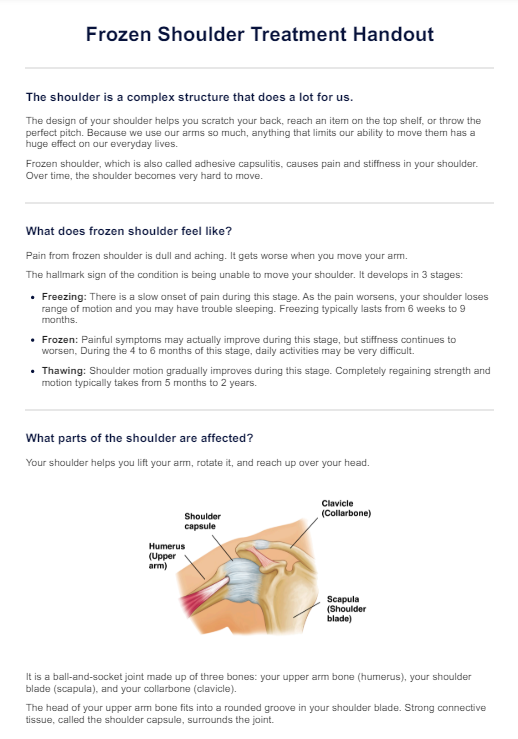The fastest way to improve frozen shoulder symptoms is through a combination of physical therapy exercises and corticosteroid injections to reduce inflammation and improve range of motion.

Frozen Shoulder Treatment Handout
Learn about frozen shoulder treatment options through Carepatron's free PDF download. Explore different recommendations and examples to help you manage this condition effectively.
Use Template
Frozen Shoulder Treatment Handout Template
Commonly asked questions
Avoid activities that cause sudden or excessive shoulder pain, such as lifting heavy objects or reaching behind your back, as these can exacerbate symptoms and hinder recovery.
Yes, applying heat to the shoulder can help relax shoulder muscles and increase blood flow, which may temporarily alleviate pain and stiffness associated with frozen shoulder.
EHR and practice management software
Get started for free
*No credit card required
Free
$0/usd
Unlimited clients
Telehealth
1GB of storage
Client portal text
Automated billing and online payments











